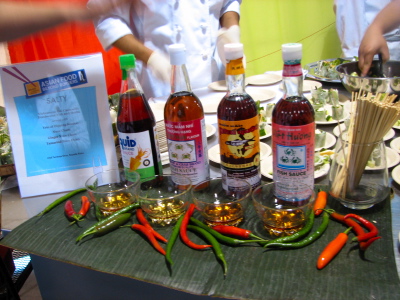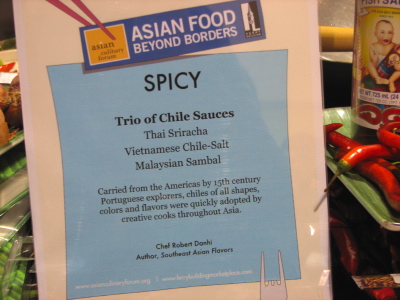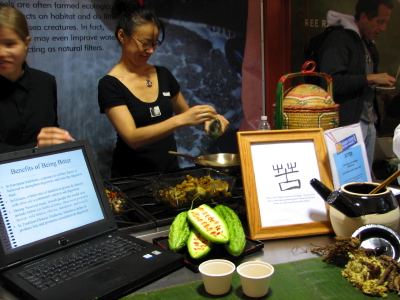On Friday October 10th the Asian Culinary Forum kicked off with a sold out tasting event, The Six Asian Flavors. What made this program such a fantastic success was the opportunity to see, handle, smell and taste examples of the defining flavors of Asian cuisine that spans many countries.
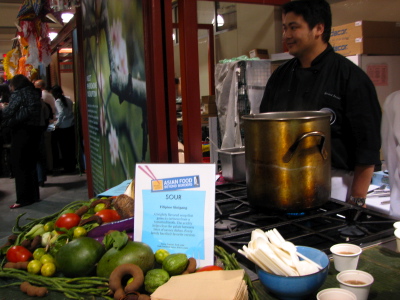
Sour featured Sinigang na Baka a tangy soup made by Filipino chef Emmanuel Santos of Bistro Luneta and explanations from food writer Nancy Freeman. Fresh tamarind, limes, tomatoes, eggplants, green mangoes, long beans and taro root were all featured in their uncooked forms, as well as in the scrumptious and soothing soup.
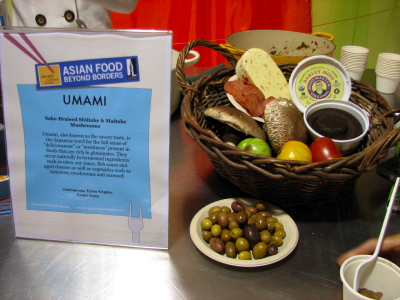
Umami is possibly the least well known flavor. It is best described as "savory" and has a mouthwatering effect. It was represented by sake-braised shiitake and maitake mushrooms. On hand were also other examples of foods high in umami such as cheese, olives, miso and tomatoes. While this flavor is found just about every cuisine it is particularly important in Asian cuisine and was first identified in Japan.
